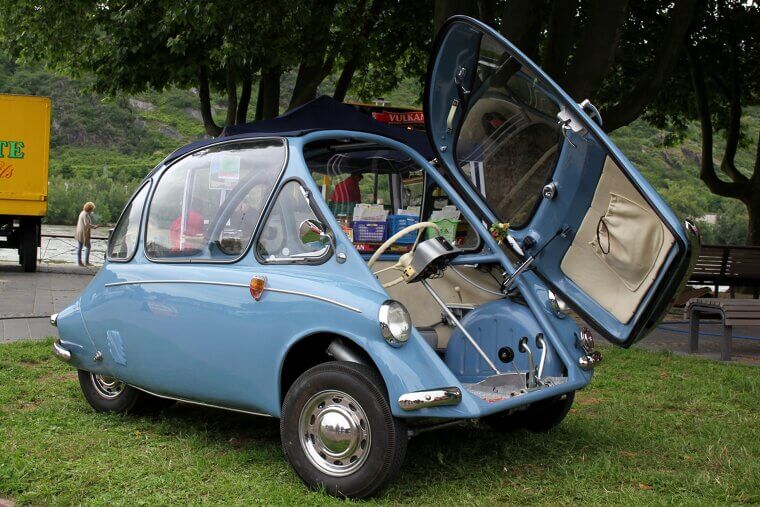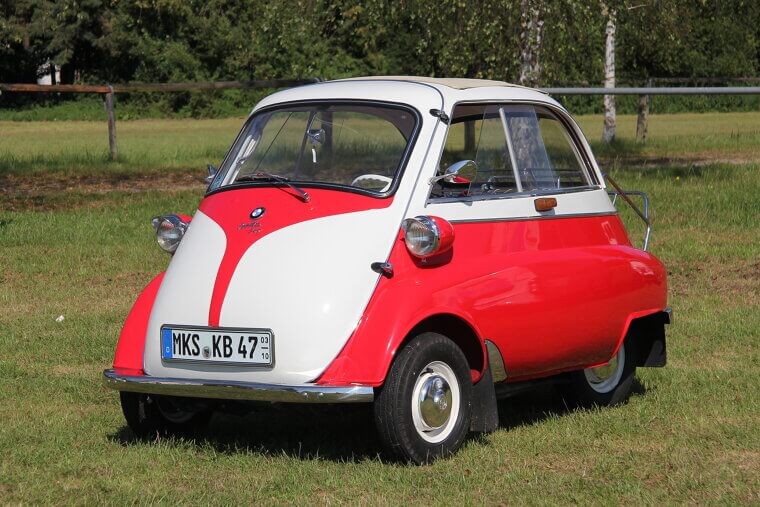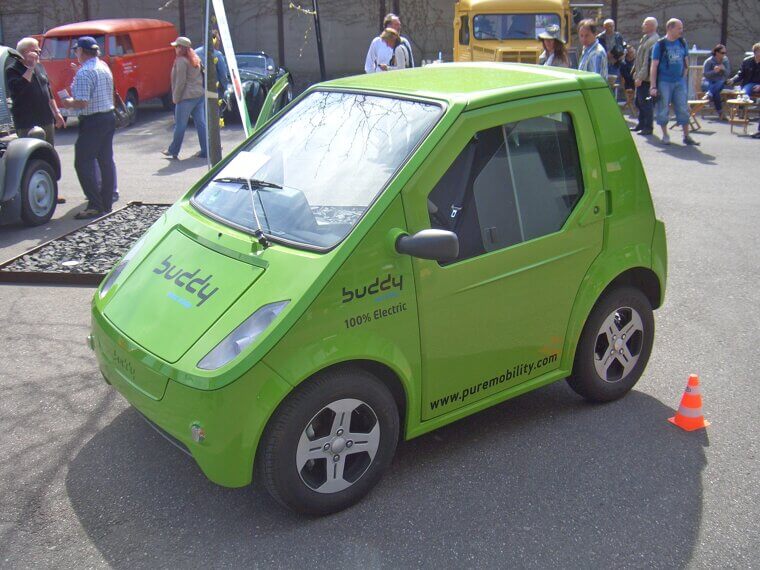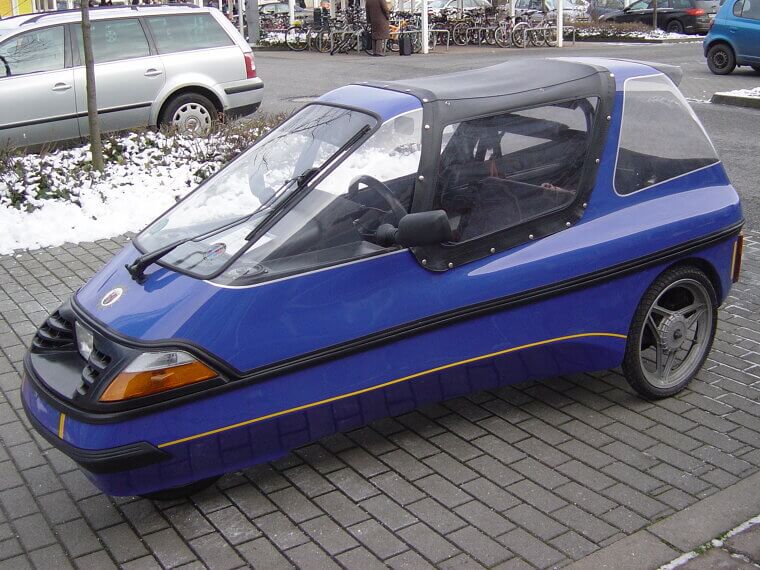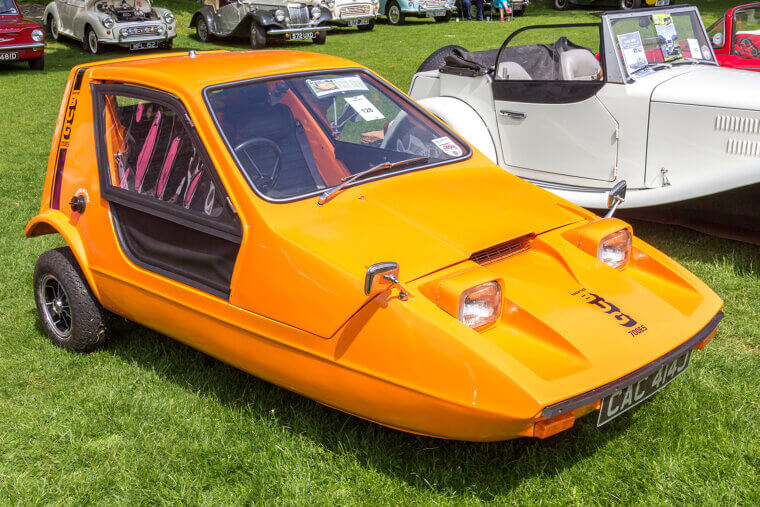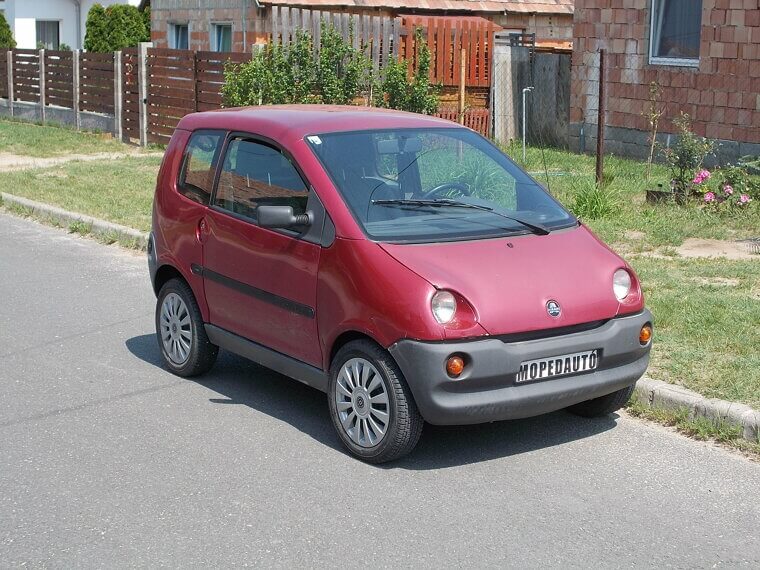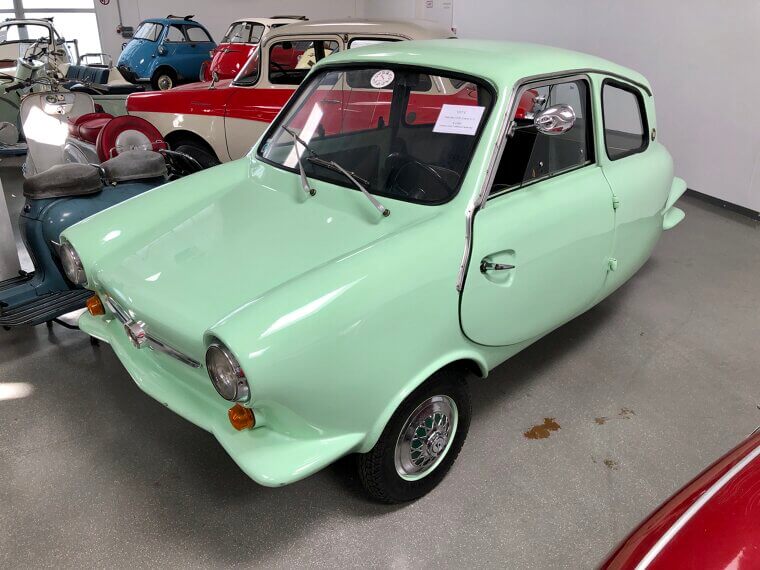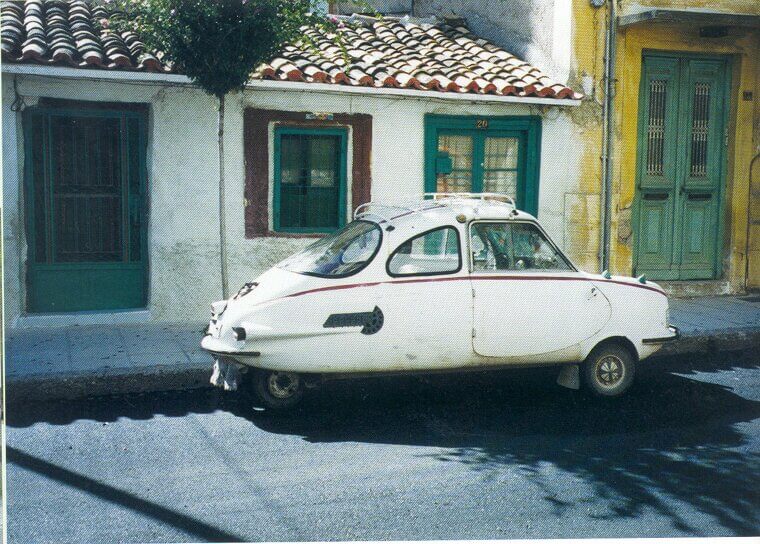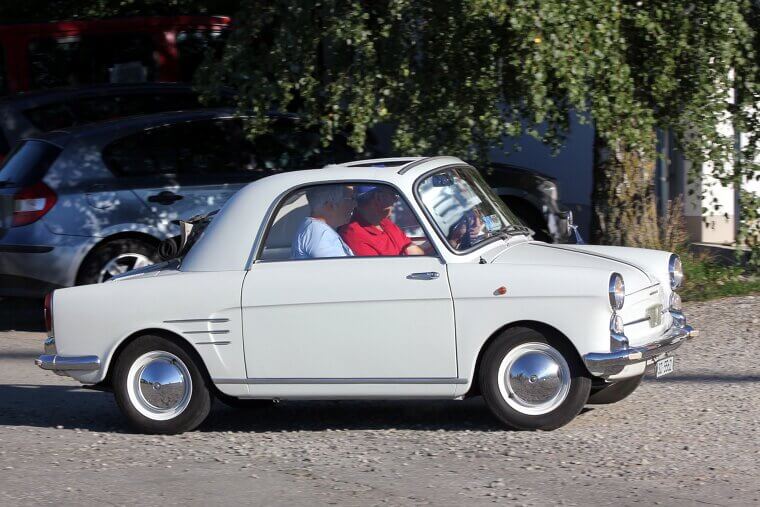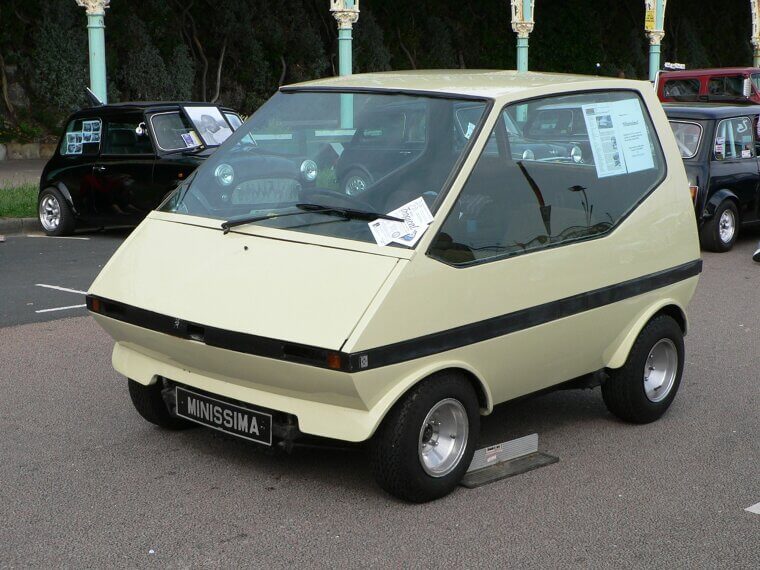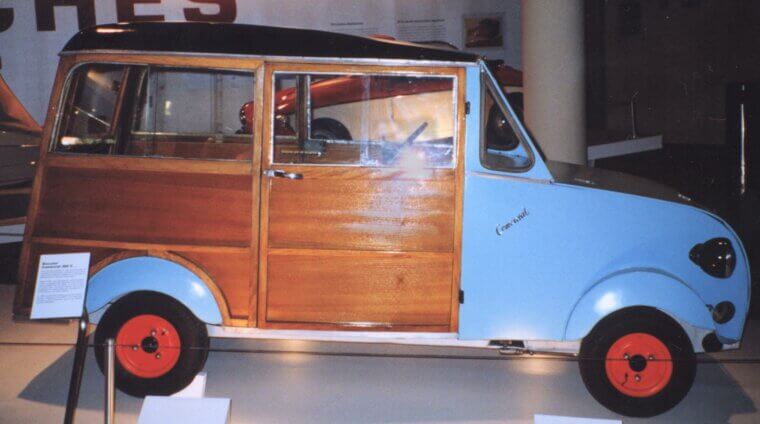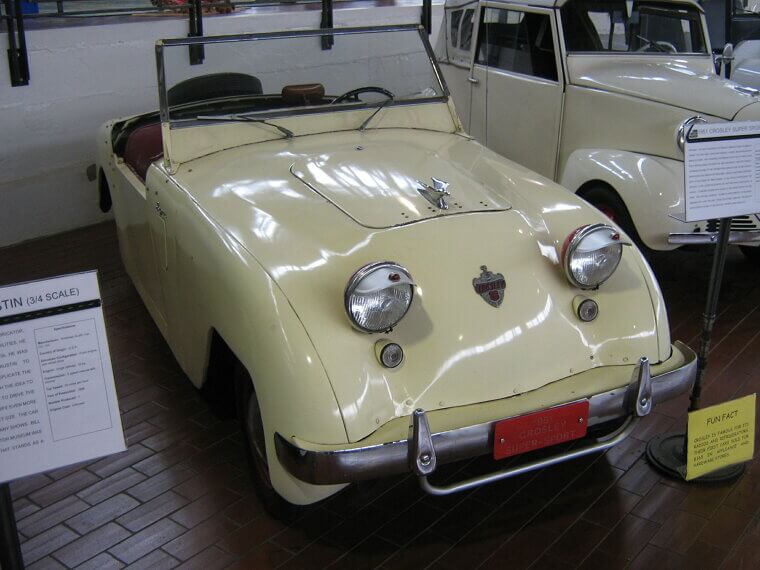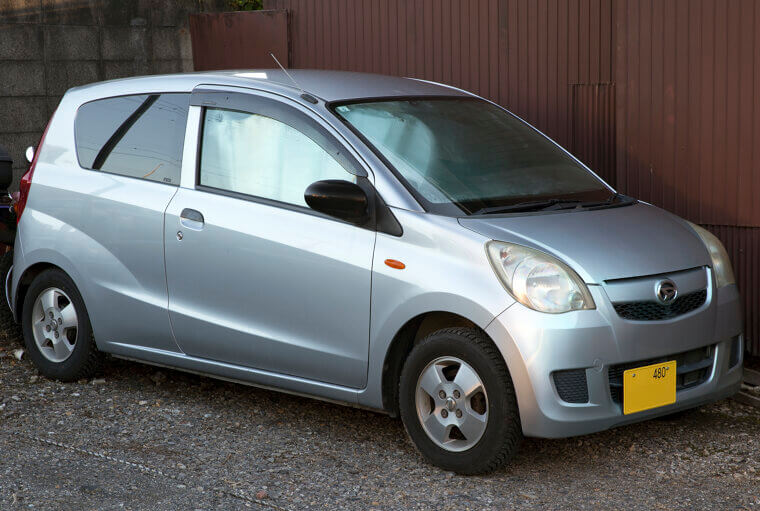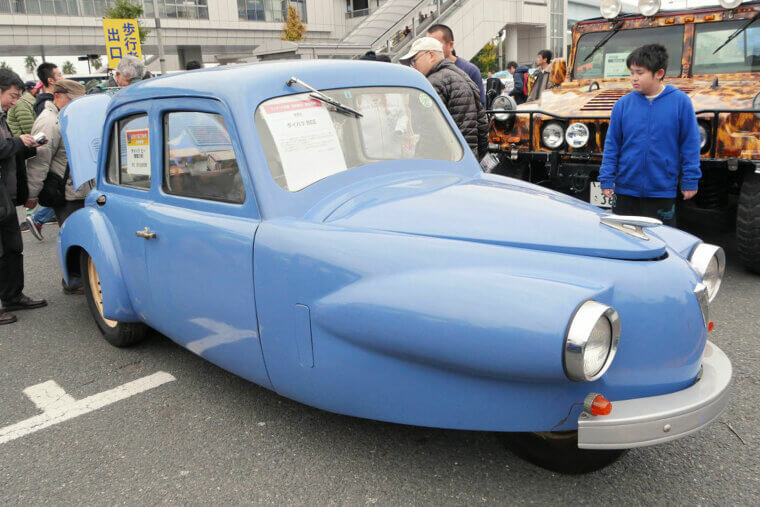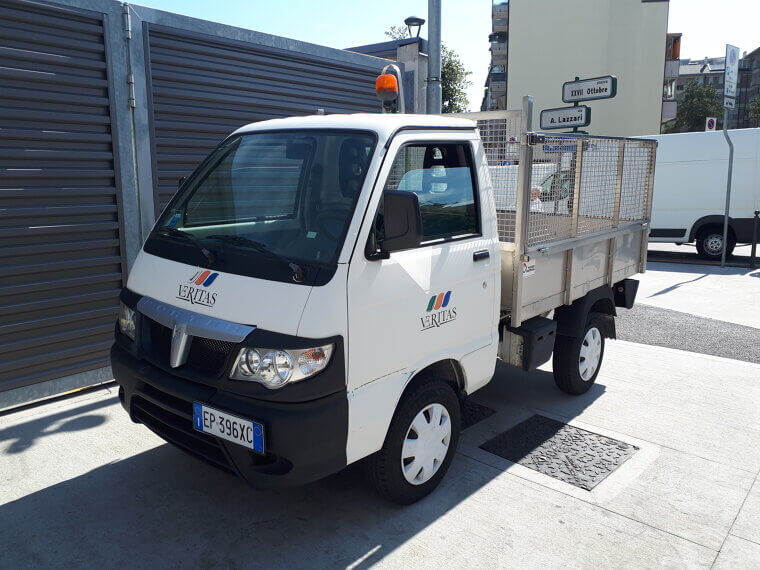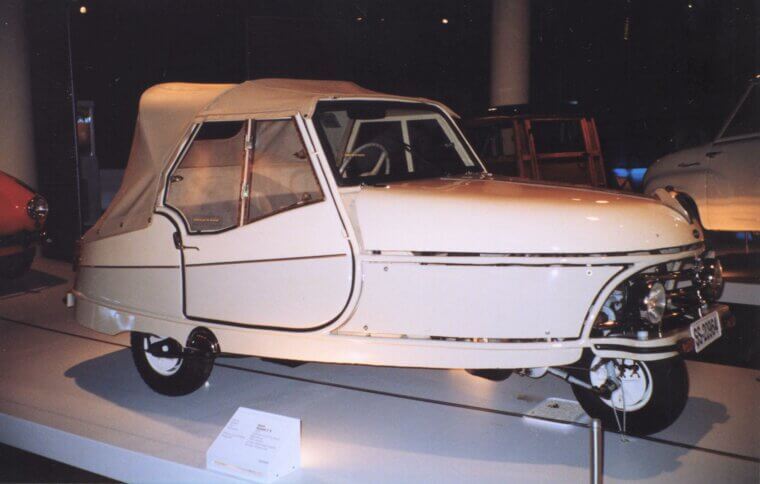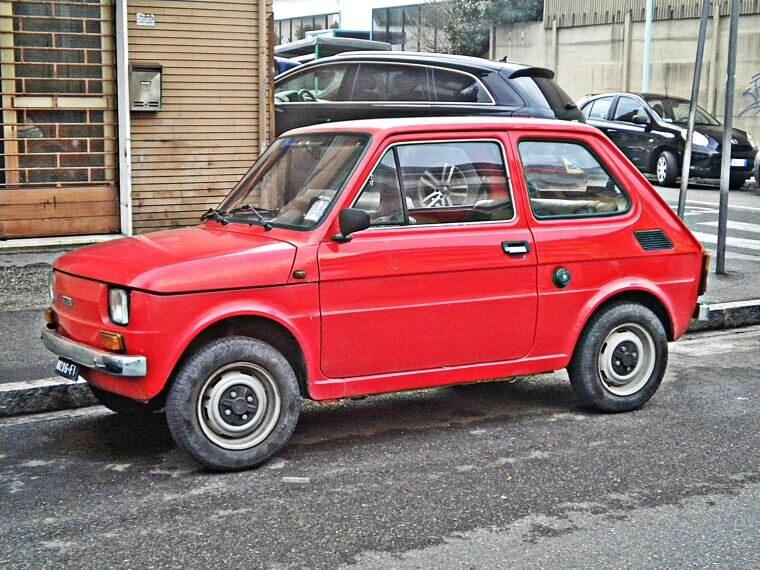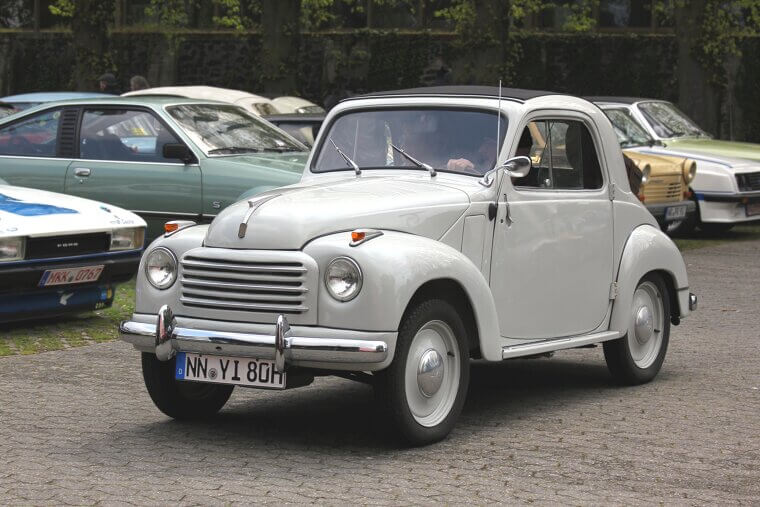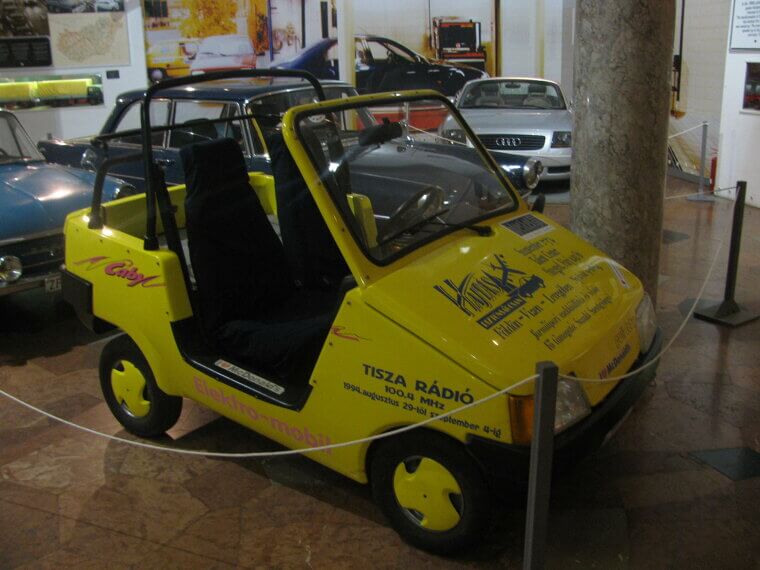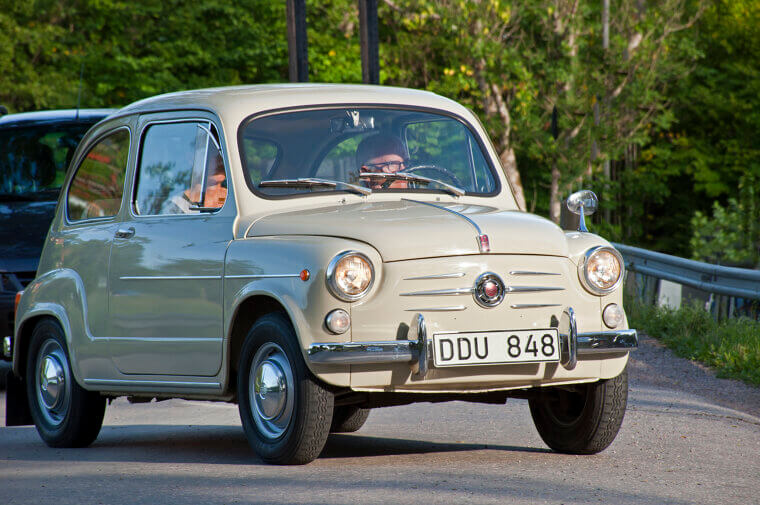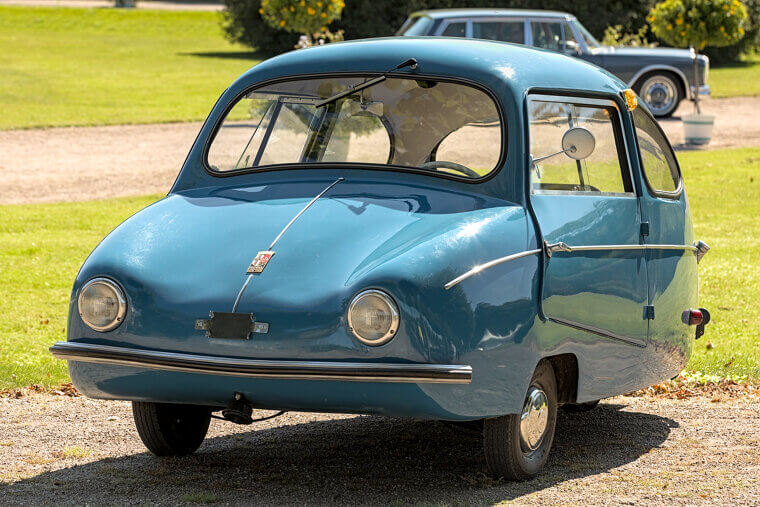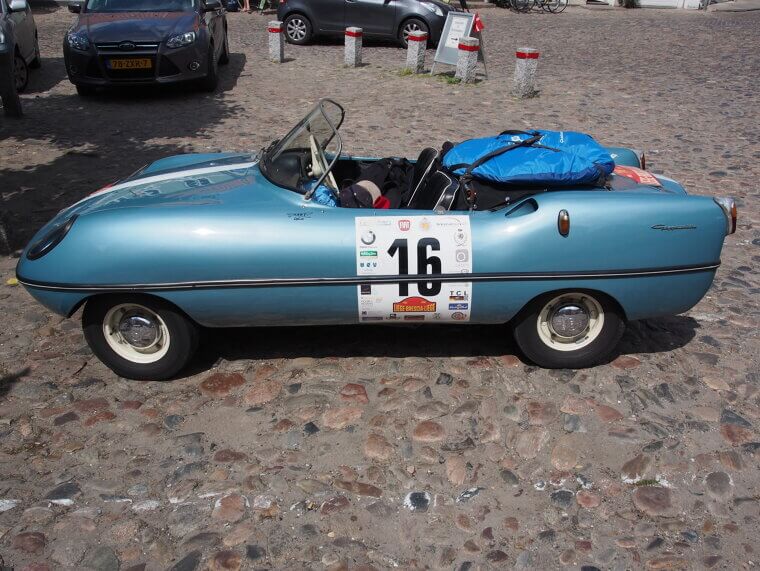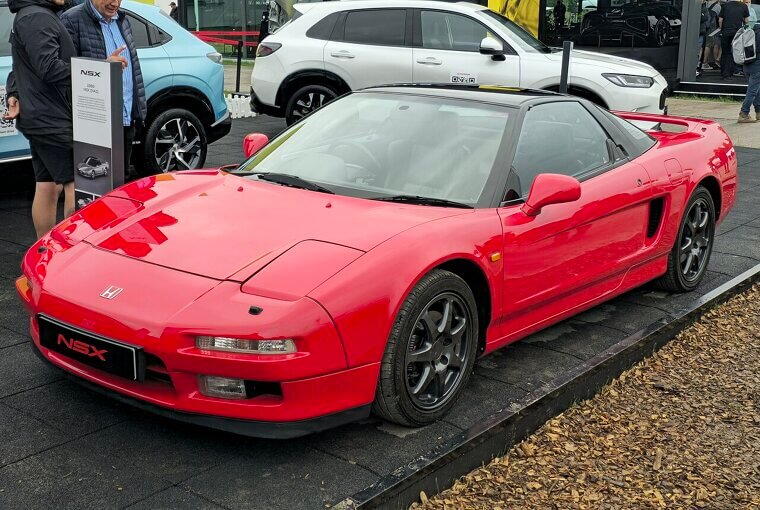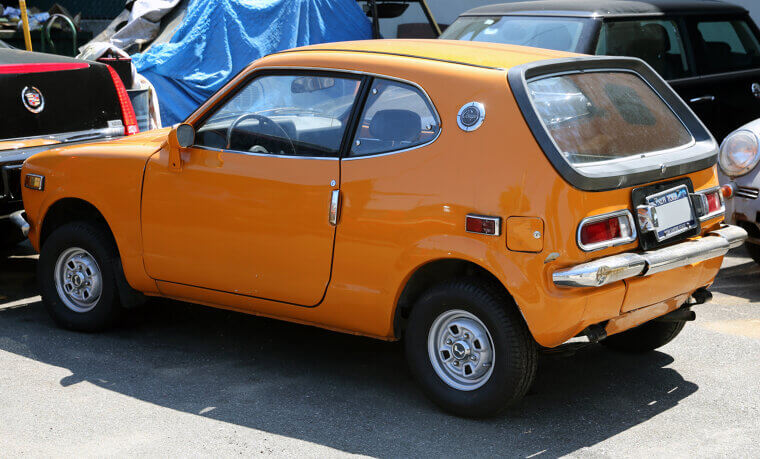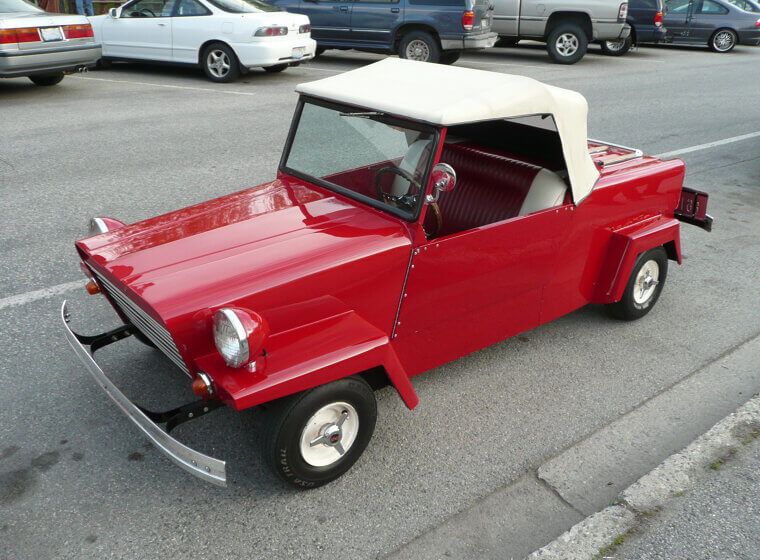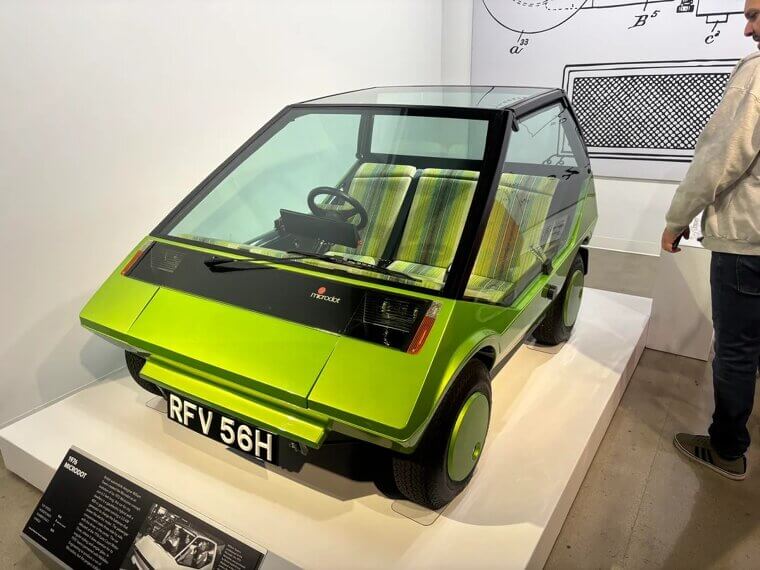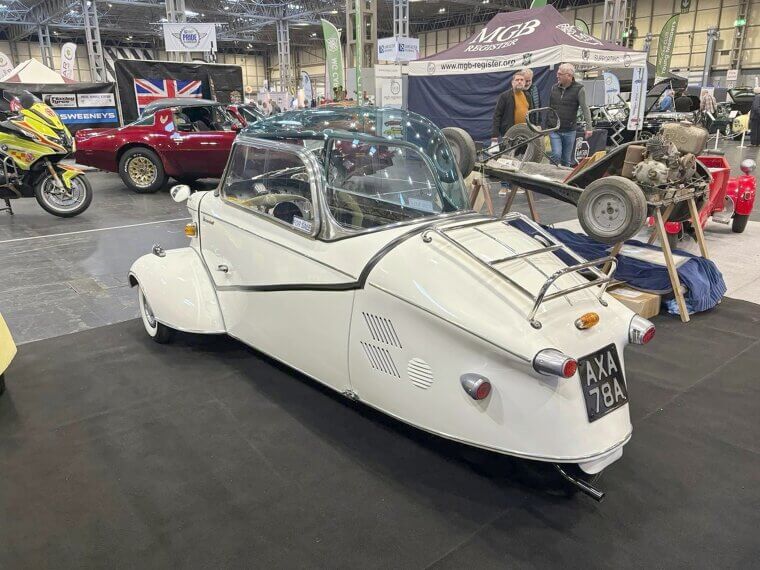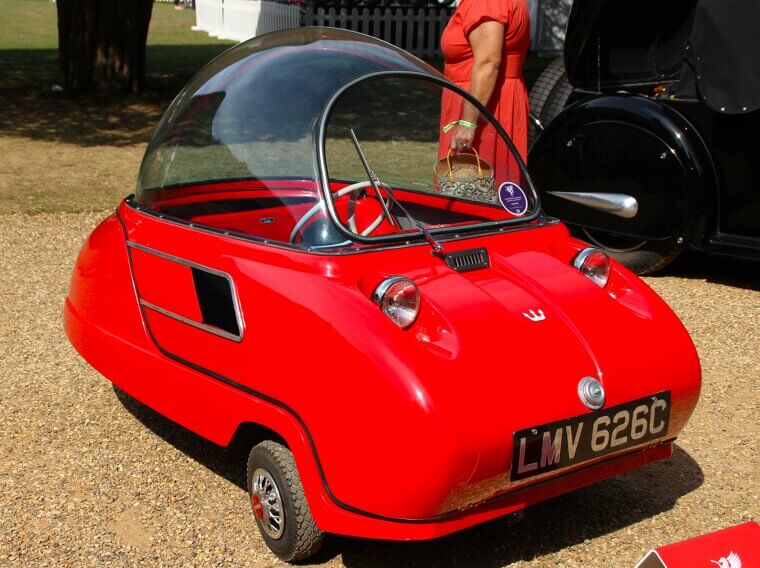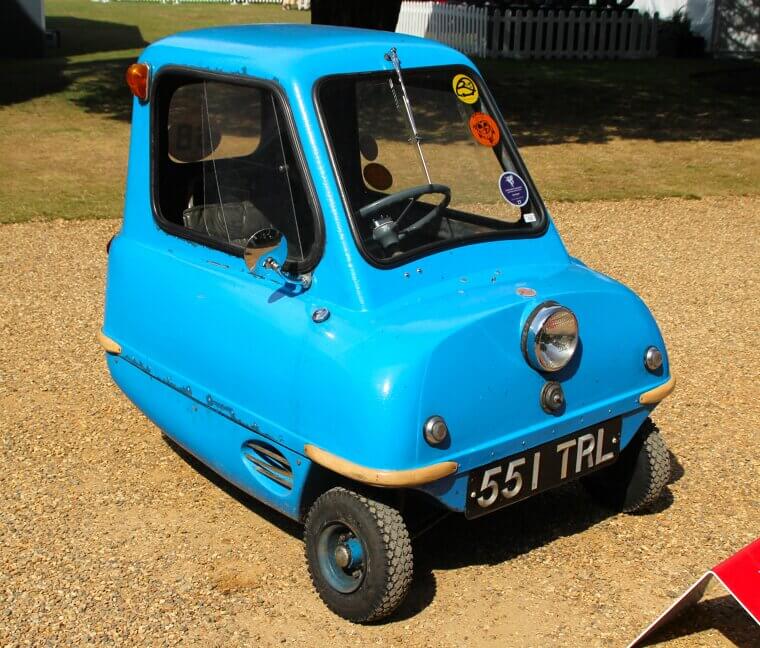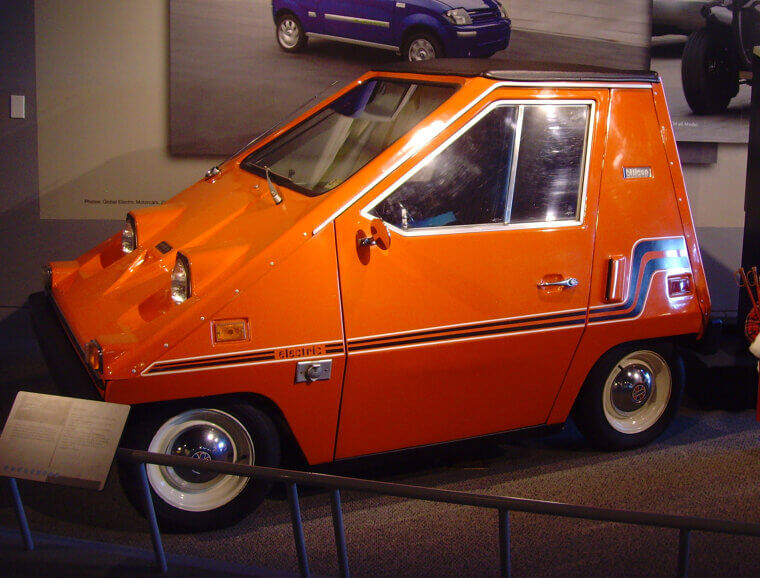Heinkel Kabine
The Heinkel Kabine was a microcar that was produced between 1956 and 1958. The Kabine's body was made of steel, and an opening front provided access to the interior. Additionally, in the event that the only entrance in front jammed in a collision, the cloth sun roof functioned as an emergency escape hatch.
BMW Isetta 300
Originally produced in 1953, the Isetta is a microcar that has since been licensed for construction in several nations. Isetta means "little Iso”, so its unique look is apparent in its name. Its egg-shaped design and bubble-like windows earned it the moniker "bubble car," which is also used to describe other vehicles of a similar design.
Buddy
In the early 2000s, Buddy Electric created the Norwegian electric city automobile known as Buddy. Buddy is a straightforward, practical electric city car that can travel 20 to 60 km depending on the time of year and the terrain. This vehicle, which is regarded as one of the tiniest ever produced, can only accommodate two passengers.
CityEl
The CityEl is a lightweight, three-wheeled electric vehicle that was first created and produced in Denmark. It is a one-person vehicle with a distinctively central seat. The entire top half of the car opens upward on gas struts to provide access to the cockpit instead of traditional doors.
Bond Bug
The Bond Bug, a little British two-seater, is a three-wheeled vehicle that was manufactured between 1970 and 1974. It is a wedge-shaped microcar with side screens in place of traditional doors and a lift-up canopy. The ‘Bug’ part of its name is fairly accurate, with its tiny build and bright green color.
Aixam 400
Aixam-Mega is a French automobile manufacturer based in Aix-les-Bains, Savoie. Interestingly, in Britain, this car is not considered a car at all; it is classified as a quad bike instead. This means that in this country, you do not even need to be of legal driving age to drive this vehicle. Can you believe it?
Alta A200
Alta debuted the A200, a three-wheeled passenger automobile, in 1968. The vehicle, which was based on the German Fuldamobil and had Alta's original body design, was powered by a Heinkel 200cc engine. The business relocated its manufacturing to a bigger facility, where it remained until 1978.
Attica 200
One of the smallest cars ever constructed is the Greek microcar known as the Attica 200, which was manufactured in the 1960s. It became well-known for its simplicity and usefulness due to its three-wheel design and small size. It is still a recognizable symbol in the history of minimalist automotive engineering since it is both lightweight and practical.
Attica DIM 652
The Attica DIM 652 is definitely one of the smallest microcars ever made, and it's a rare Greek vehicle from the late 1970s. Its limited manufacturing run and niche appeal cemented its status as a distinctive yet short-lived chapter in automotive history, despite its inventive design and small size.
Autobianchi Bianchina Trasformabile
With its two-cylinder, air-cooled engine located in the back, the Bianchina's mechanicals were based on those of the Fiat 500, but it had an entirely new, fashionable body. The Bianchina was a high-end city automobile with several high-end features and a sumptuous "recreational vehicle" and "second vehicle in the household" marketing.
BLMC Minissima
William Towns created the tiny concept city automobile known as the Minissima. This vehicle was built using a BMC A-Series engine and 10" wheels. It has a single rear door and is made to park end-on to the curb. It has four seats: two in the front, facing forward, and two in the back, facing inward.
Biscuter 100
Biscuter is a microcar manufactured in Spain from 1953 until 1960, and around 10,000 units were made. This car is among the smallest ever made, as it was made as a cheap alternative vehicle during the struggles following World War II. Today, these cars mainly reside in museums and are adored for their unique, petite look.
Biscuter Comercial 200C
One of the smallest cars ever produced is the Spanish microcar known as the Biscuter Comercial 200C, which was manufactured in the 1950s. It was a distinctive and cost-effective option in its time because of its lightweight design, practicality, small body, and simple engineering.
Crosley Super Sport
The lightweight, two-seater roadster Crosley Super Sports is praised for its small size and agile handling. With its limited performance and unique contribution to automotive history, it was released in the late 1940s and quickly became a quirky addition to the microcar market.
Daihatsu Mira 7th Generation
A Japanese automaker produced the tiny kei-style city automobile known as the Daihatsu Mira, which was previously referred to as the Cuore, Domino, and, more recently, the Charade. The layout of this car is the most conventional and is still a well-liked, useful design, despite the limited amount of space it has.
Daihatsu Fellow Max
One notable Kei vehicle from the 1970s is the Daihatsu Fellow Max, which is recognizable for its incredibly small size and avant-garde styling. Its compact but effective engine solidified its reputation as one of the smallest automobiles ever made and represented pragmatism and inventiveness.
Daihatsu Bee
A little three-wheeled microcar from the 1950s, the Daihatsu Bee is renowned for its unique look and practical design. Its lightweight design and simple features made it one of the smallest cars ever made, with the goal of facilitating accessible mobility.
Piaggio Porter
Compact utility vehicles like the Piaggio Porter are well known for their minuscule size and remarkable usefulness. Constructed to thrive in urban environments, it blends functionality and maneuverability to provide effective transportation options and merit its position as one of the tiniest cars ever produced.
David Torpedo 2 S
The Spanish microcar David Torpedo 2 S, which debuted in the 1950s, is notable for its lightweight construction and three-wheeled design. Designed to provide accessible mobility, it was a unique and inventive contribution to the market for small cars of the time by fusing efficiency and simplicity.
Fiat 126
Fiat produced and marketed the Fiat 126, a four-passenger, rear-engine city car, for a twenty-eight-year production cycle from 1972 to 2000. In addition to its peculiar appearance, this vehicle possessed a water-cooled engine and a rear hatchback with more room for cargo.
Fiat 500 Topolino
At the time of its manufacture, the Topolino was among the tiniest vehicles in existence. Three variants were produced from 1936 until 1955, with only minor cosmetic and technical modifications. This car was considered a full-scale vehicle rather than a cyclecar since it had a 569 cc four-cylinder, side-valve, water-cooled engine positioned in front of the front axle.
Puli
The Puli was a 2.46-meter-long microcar. Reinforced glass fiber was used to make the body. It was primarily meant for export to France, where operating that type of vehicle did not require a driver's license, which meant that it was the ideal (and legal) car for young people.
Fiat 600
Italian automaker Fiat produced the Fiat 600, a compact, rear-engine city car and economical family vehicle, between 1955 and 1969. It was Fiat's first rear-engined vehicle, measuring only 3.22 meters (10 feet 7 inches) in length, and cost $9,440 at the time of its production.
Fram King Fulda (1957)
The German-made microcar known as the Fram King Fulda (1957) was admired for its small size and distinctive style. It stood out as a lovely example of mid-century automotive inventiveness, providing an affordable transportation option with its lightweight design and small engine.
Goggomobil Dart
The Goggomobil Dart was a microcar roadster that was manufactured between 1959 and 1961. The automobile weighed only 345 kg (761 lb) and had a two-seater open sports car body without doors. It featured a tiny luggage compartment integrated into the nose and was propelled by a twin-cylinder, two-stroke motor situated on the back.
Honda N Sedan
The Honda N Sedan is a compact, four-passenger, two-door, front-wheel drive vehicle that is sold as a three-door wagon and a two-door sedan. This car was a new market sector for Honda, giving an economical, reliable, and easy-to-maintain vehicle that had broad market appeal to individual car ownership.
Honda Z Coupe
The Honda Z Coupe, which debuted in the early 1970s, is noted for its tiny proportions and elegant styling. As a tiny yet sporty Kei car, it offered surprising functionality mixed with unusual appearance, making it a standout choice in the microcar category of its age.
King Midget Model III
The Midget Motors Corporation manufactured the King Midget, a microcar, from 1946 until 1970. The vehicle was equipped with four-wheel hydraulic brakes and a Wisconsin single-cylinder engine that produced 9.2 horsepower (6.9 kW). The price in 1958 was close to $900, which made this a cheap alternative car for the public, despite its odd look.
Mallalieu Microdot
The Microdot was a petrol/electric hybrid vehicle with a small 400cc petrol engine powering a 3.5 kW generator. It was designed to carry three people side-by-side on short city journeys, with the driver sitting in the central position.
Mazda R360 Coupe
Known for its lightweight design and small size, the Mazda R360 Coupe was a pioneering microcar in Japanese automotive history, offering affordability and practicality. During the post-war economic boom, this small but fashionable vehicle became a symbol of creative design and efficient engineering. It was first introduced in 1960.
Messerschmitt Kabinenroller
Produced between the 1950s and 1960s, the Messerschmitt Kabinenroller is a famous microcar featuring tandem seats and a distinctive bubble-canopy shape. For post-war urban mobility, its lightweight design and small three-wheeled chassis made it a useful but unique option.
Mitsubishi Minica 1st Generation
Launched in 1962, the Mitsubishi Minica 1st Generation was a small and useful kei vehicle made for the domestic Japanese market. It became a major player in the microcar market by providing accessible urban mobility and was renowned for its lightweight design and effective engineering.
Peel Trident
The Peel Trident had a glass-fibre shell that was a monocoque with coil-sprung, undamped wheels. It had two seats or one seat with a shopping basket that could be removed, and it had a clear bubble top. Shockingly, this car was on the market for just $250, which made it one of the cheapest (and smallest) cars ever made!
Peel P50
One of the smallest production cars ever created was the Peel P50, a three-wheeled microcar manufactured in the 1960s. It provided a fresh take on urban mobility with its lightweight build and quirky, minimalist style. It is still a timeless representation of inventiveness and effective engineering, despite its compact size.
Sebring Vanguard Citicar
A wedge-shaped electric microcar created during the fuel crisis, the Sebring Vanguard Citicar was manufactured in the 1970s. It provided a cost-effective substitute for conventional automobiles and was small and simple. It was a noteworthy period in the history of electric cars because of its innovative engineering.

